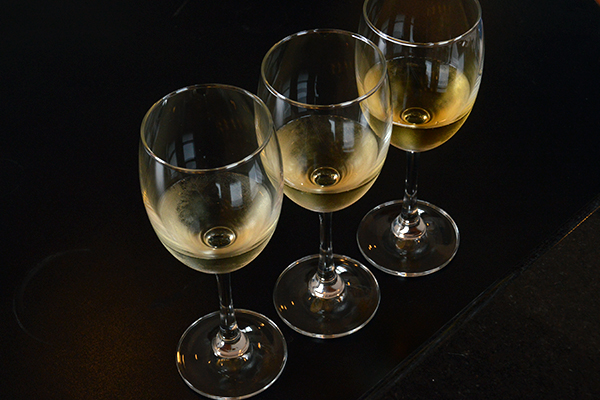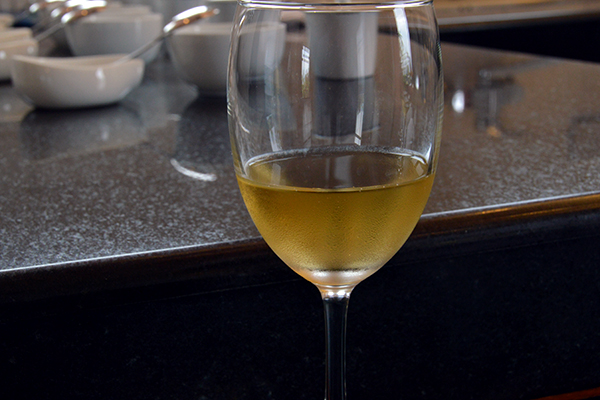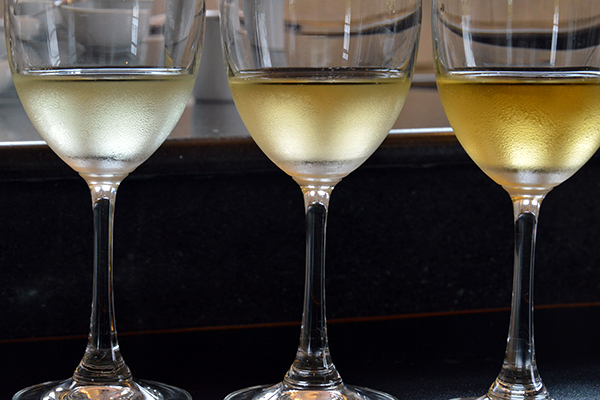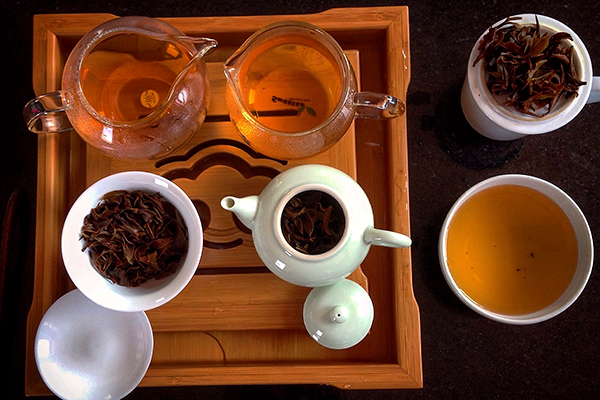Tea Brewing
"Tea is nothing but boiling water and making tea. This is the only rule you should know."
- Sen no Rikyu 千利休 (1522 - 1591)
Taking a leaf from his advice we can say that brewing is a personal choice. Tea is meant to be enjoyed and not straitjacketed by some rules. Except for some basic principles that is, one of which is that tea leaves should be infused in water although some may want to infuse them in milk or whisky!
The effect of altitude and associated chill and mist of the mountains is that our tea is invariably light, flowery, fruity or nutty and highly aromatic. This type of tea is best enjoyed without adding sugar or milk. Accordingly we suggest these brewing techniques for the best enjoyment of our tea.
HIMALAYAN BOUQUET
- Measure 1 cup (200ml) of water for every 1-2 tea spoons (3 grams) of tea.
- Bring fresh filtered water to a boil and switch off the heat.
- Put 1-2 tea-spoons or 3 grams of leaves per cup into the teapot.
- Pour the hot water into the teapot.
- Let the liquor stand for 3 to 4 minutes to infuse the leaves properly.
- Pour into cups and drink plain
- For brewing in Chinese gongfu style with multiple infusions.
- Put in 7-8 grams of tea into an appropriate brewing vessel so that the bottom of the vessel is completely covered by tea leaves.
- Pour in hot water to rinse the tea and discard the water immediately.
- Pour in hot water, wait for 10-15 seconds and pour out the tea to the last drop into a cha hai 茶海 and drink.
- Repeat the step each time increasing the brewing time slightly (say 10 seconds) until everything is extracted and you feel the taste becoming more bland.
RECOMMENDATIONS
- Use the best quality water to brew tea.
- Seal (ziplock) the packet after use or fold the top and clip it using paper clips to prevent exposure.
- Store in cool dry place and away from other aromatic foods like spices or coffee.
- Small ceramic or China clay tea pots are recommended for brewing this tea.
- Do not over-steep tea. Use more leaves for stronger tea.
- For brewing in Chinese gongfu style, please use appropriate tea ware. We recommend Yixing宜興 clay, Ru Yao 汝窑 or similar. Fine ceramic ware is also suitable if Yixing or Ru Yao is not available.
INGREDIENTS & ORIGIN
Only tea leaves from tea plants (Camellia sinensis) from Hile-Dhankuta hills.
ABOUT THIS TEA
This artisanal tea was hand plucked by girls of Jun Chiyabari Tea Garden in Dhankuta district of East Nepal and crafted by our tea master using techniques developed by us over the years with inspiration from the master tea makers of East Asia.
Himalayan Bouquet is made in the style of the Oolong teas of East Asia.
HRHT
- Measure 1 cup (200ml) of water for every 1-2 tea spoons (3 grams) of tea.
- Bring fresh filtered water to a boil and switch off the heat.
- Put 1-2 tea-spoons or 3 grams of leaves per cup into the teapot.
- Pour the hot water into the teapot.
- Let the liquor stand for 4 to 5 minutes.
- Pour into cups and drink plain.
- We also recommend drinking the spring and autumn harvests of this tea in gongfu style.
- Put in 7-8 grams of tea into an appropriate brewing vessel so that the bottom of the vessel is completely covered by tea leaves.
- Pour in hot water to rinse the tea and discard the water immediately.
- Pour in hot water, wait for 10-15 seconds and pour out the tea to the last drop into a cha hai 茶海 and drink.
- Repeat the step each time increasing the brewing time slightly (say 10 seconds) until everything is extracted and you feel the taste becoming more bland.
RECOMMENDATIONS
- Use the best quality water to brew tea.
- Seal (ziplock) the packet after use or fold the top and clip it using paper clips to prevent exposure.
- Store in cool dry place and away from other aromatic foods like spices or coffee.
- Small ceramic or China clay tea pots are recommended for brewing this tea.
- Do not over-steep tea. Use more leaves for stronger tea.
- For brewing in Chinese gongfu style, please use appropriate tea ware. We recommend fine ceramic tea ware or Ru Yao 汝窑 or similar.
- Other similar teas from our garden like HSP or HAU may be similarly brewed.
INGREDIENTS & ORIGIN
Only tea leaves from tea plants (Camellia sinensis) from Hile-Dhankuta hills.
ABOUT THIS TEA
This artisanal tea was hand plucked by girls of Jun Chiyabari Tea Garden in Dhankuta district of East Nepal and crafted by our tea master. This special tea is manufactured only in the spring and autumn when the conditions are best to bring out the special flavour that is characteristic of Nepal Himalaya.
HIMALAYAN ORANGE
- Measure 1 cup (200ml) of water for every 1-2 tea spoons (3 grams) of tea.
- Bring fresh filtered water to a boil and switch off the heat.
- Put one tea-spoon or 3 grams of leaves per cup into the teapot.
- Pour the hot water into the teapot.
- Let the liquor stand for 4 to 5 minutes.
- Pour into cups and drink plain.
RECOMMENDATIONS
- Use the best quality water to brew tea.
- Seal (ziplock) the packet after use or fold the top and clip it using paper clips to prevent exposure.
- Store in cool dry place and away from other aromatic foods like spices or coffee.
- Small ceramic or China clay tea pots are recommended for brewing this tea.
- Do not over-steep tea. Use more leaves for stronger tea.
INGREDIENTS & ORIGIN
Only tea leaves from tea plants (Camellia sinensis) from Hile-Dhankuta hills.
ABOUT THIS TEA
This tea was hand plucked by girls of Jun Chiyabari Tea Garden in Dhankuta district of East Nepal and crafted by our tea master in the style of traditional tea of the region.
HIMALAYAN IMPERIAL BLACK
- Measure 1 cup (200ml) of water for every 1-2 tea spoons (3 grams) of tea.
- Bring fresh filtered water to a boil and switch off the heat.
- Put one tea-spoon or 3 grams of leaves per cup into the teapot.
- Pour the hot water into the teapot.
- Let the liquor stand for 4 to 5 minutes.
- Pour into cups and drink plain.
- For brewing in Chinese gongfu style with multiple infusions.
- Put in 7-8 grams of tea into an appropriate brewing vessel so that the bottom of the vessel is completely covered by tea leaves.
- Pour in hot water to rinse the tea and discard the water immediately.
- Pour in hot water, wait for 10-15 seconds and pour out the tea to the last drop into a cha hai 茶海 and drink.
- Repeat the step each time increasing the brewing time slightly (say 10 seconds) until everything is extracted and you feel the taste becoming more bland.
RECOMMENDATIONS
- Use the best quality water to brew tea.
- Seal (ziplock) the packet after use or fold the top and clip it using paper clips to prevent exposure.
- Store in cool dry place and away from other aromatic foods like spices or coffee.
- Small ceramic or China clay tea pots are recommended for brewing this tea.
- Do not over-steep tea. Use more leaves for stronger tea.
- For brewing in Chinese gongfu style, please use appropriate tea ware. We recommend fine ceramic tea ware or Ru Yao 汝窑 or similar.
INGREDIENTS & ORIGIN
Only tea leaves from tea plants (Camellia sinensis) from Hile-Dhankuta hills.
ABOUT THIS TEA
This artisanal tea was hand plucked by girls of Jun Chiyabari Tea Garden in Dhankuta district of East Nepal and crafted by our tea master. The technique used in crafting this tea is unique and was taught by master tea makers from Japan and Taiwan.
COLD BREWING OR MIZUDASHI 水出し
All our teas can be cold brewed in what is called mizudashi水出し method. This is an excellent way to drink tea throughout the day and re-hydrate oneself specially during hot summer month
- In a glass jar capable of holding 1 litre of water, put in 9 grams tea.
- Add about 1 litre of cold or normal drinking water into the jar. Please make sure that the water is not hot or even warm as you do not want the tea to brew immediately.
- Close the jar and put it in the fridge overnight.
- Your tea will be ready after 12 hours.
- Decant it into another jar and keep it in the fridge or thermos to drink it throughout the day.
- You can enjoy this tea in a wine glass too.
- For example our early spring HRHT will taste like white wine but without the acidity.



